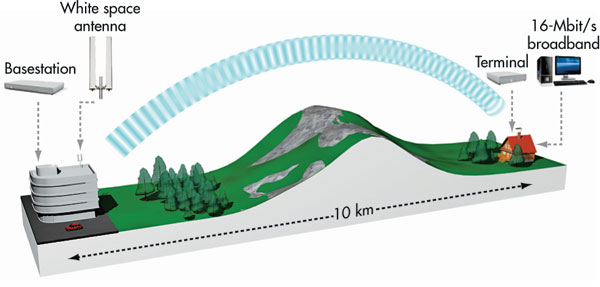New embedded computing standards always take a while to get traction, and a burning question for innovators is what to do in the period between concept and acceptance. Sometimes, new ideas come when commercial silicon changes direction.
When WiMAX debuted several years ago, it was hailed as a 4G technology providing a higher bandwidth, wider range solution than Wi-Fi. Several silicon providers, notably Beceem, GCT, Intel, Sequans, and others stepped in with chipsets. Clearwire got behind providing network tone in the US and it looked like things were rolling.
Markets intervened. The volumes for WiMAX didn’t materialize, and it became niched into a few geographies like India. Beceem sold their chipset business to Broadcom, who shifted the roadmap to the more lucractive LTE market and to next generation 802.11ac 5 GHz Wi-Fi. That left Clearwire with no choice but to migrate to LTE, and it remains to be seen if they’ll survive at all.
LTE may have won, but it’s not without use issues:
1) In the US, we are short on licensable, non-interfering, affordable spectrum. Carriers are clawing, with help from the CTIA, to get more LTE spectrum to serve exploding demand. There’s debate on just how short we are, but spectral efficiency computations show that a few users running at full bandwidth can eat up an LTE tower quickly.
2) Rural coverage is still a need. Setting up big LTE cells in rural areas is simply cost-prohibitive based on subscriber revenue. Small cells, while useful in dense urban settings where they can subdivide clusters of users into smaller numbers, don’t help much in rural where there is much more square mileage to cover.
3) Wi-Fi offload offers potential help, but doesn’t do much to extend the coverage range, and operators again have shied away from coverage past a local Starbucks or McDonalds in suburban or rural settings that draw traffic to them.
The recent ratification of IEEE 802.22, providing cognitive radio techniques operating in TV whitespace (TVWS) – holes in between existing TV channels, operating in unlicensed spectrum – lays out a vision for coverage with something like a 100km radius of range. The one problem: no semiconductor vendors that I can find have committed to the 802.22 standard yet. There’s inherent risk, especially after watching the WiMAX play unfold, and the recent challenges of other ventures like LightSquared working on an uncertain regulatory footing.
This leaves room for innovation, and Carlson Wireless has stepped in with their solution. I spoke briefly with CEO Jim Carlson last week about what they are doing. He said rather than go after everything that 802.22 is addressing, they took a simplified, market-driven TVWS approach to rural or M2M broadband service – they fit into global frequency spots, then pick the modulation and range needed to fill the requirements, then implement to meet the cost.

This drove Carlson to a core design that is highly customizable. Running on a Xilinx Spartan-6 FPGA with an ARC CPU core and DSP blocks, Carlson is able to meet these requirements and provide TVWS service where needed, today. It’s a relatively low cost implementation, able to hit a subscriber unit price point of around $590. It provides a minimum bandwidth of 16Mb/sec, and has one other nice feature: in a typical range of about 10km, they’re able to meet transmit power on the terminal side running off just the Ethernet port using PoE (802.16af).
Carlson’s creative approach to TVWS was cited as “one of the top two key technology disruptors in communications” by Pacific Crest at their Emerging Tech Summit last month. It’s a good example of an FPGA solution coming to market well in advance of complete standards and commercial silicon, reducing risk and creating a flexible approach to meet a range of immediate needs.
(Blogger note: One of my more popular posts on Left2MyOwnDevices covers spectrum deficit and 802.22 in a bit more depth. Blogger non-disclaimer: I’m not invested in or being sponsored by anyone I’ve mentioned here. It’s just interesting stuff. Enjoy.)
Share this post via:







The Data Crisis is Unfolding – Are We Ready?